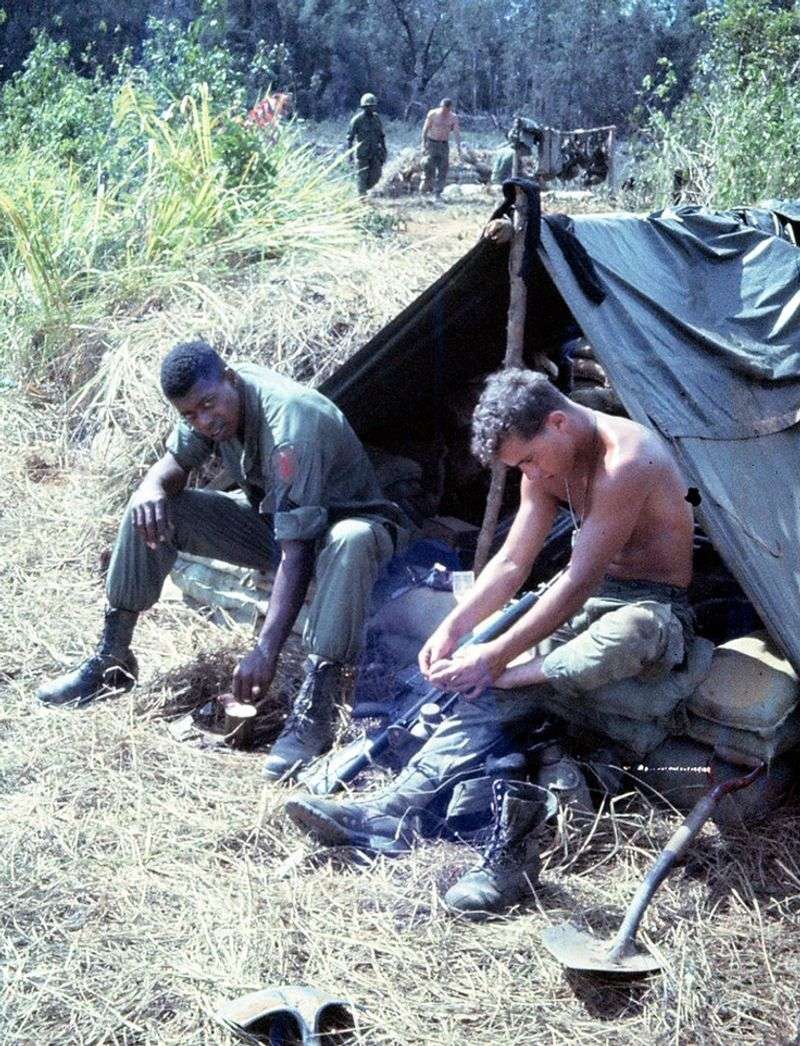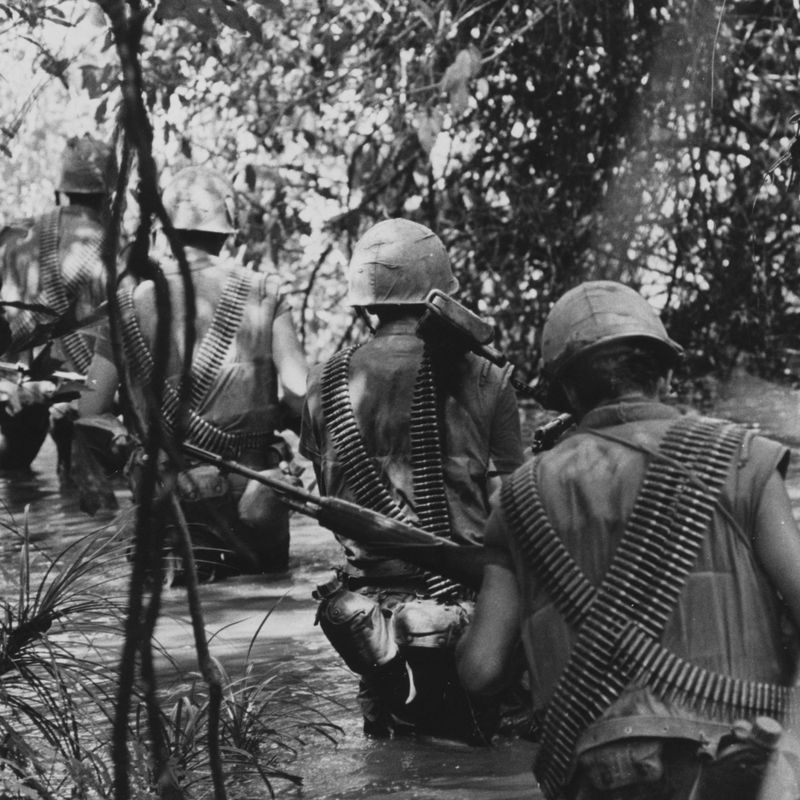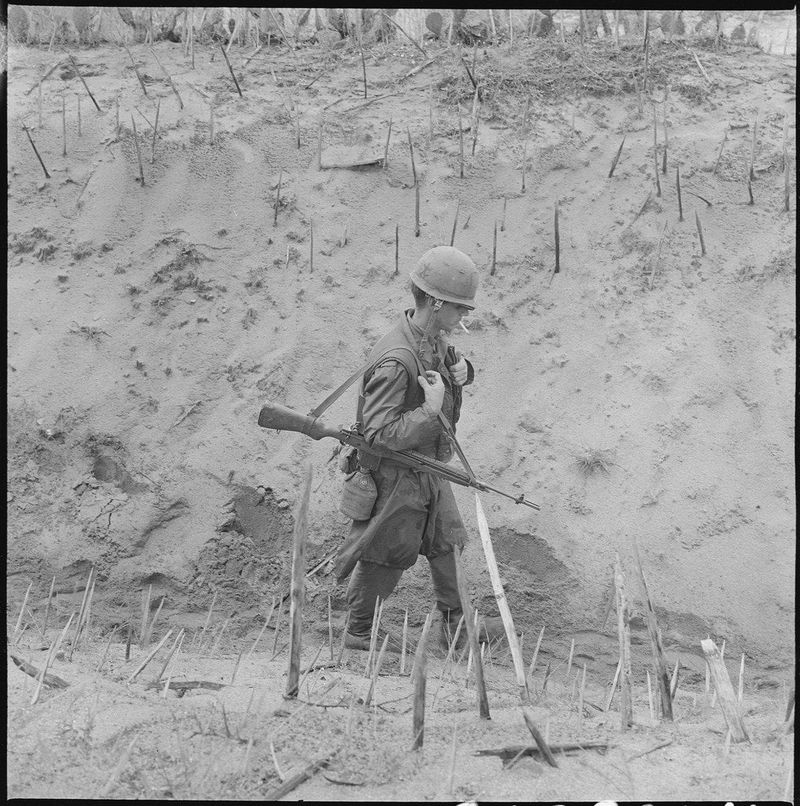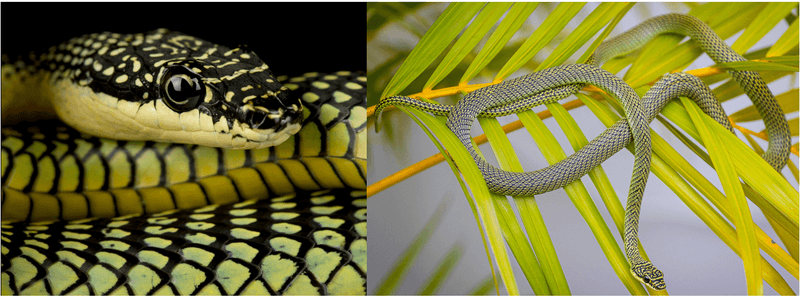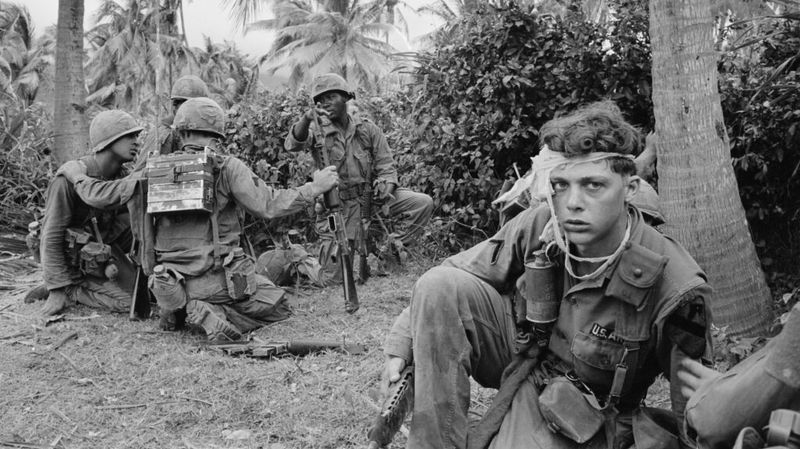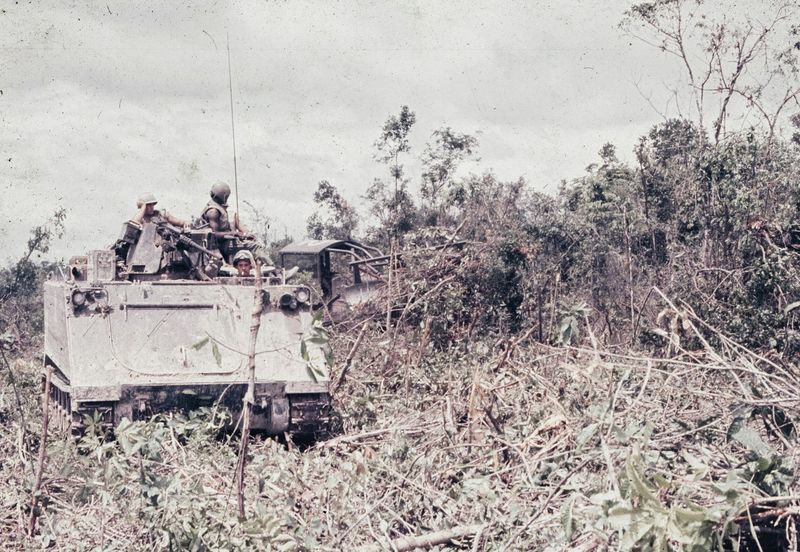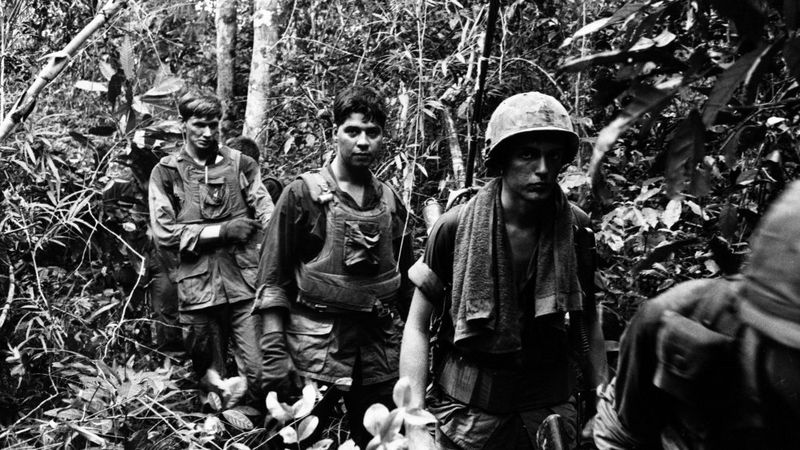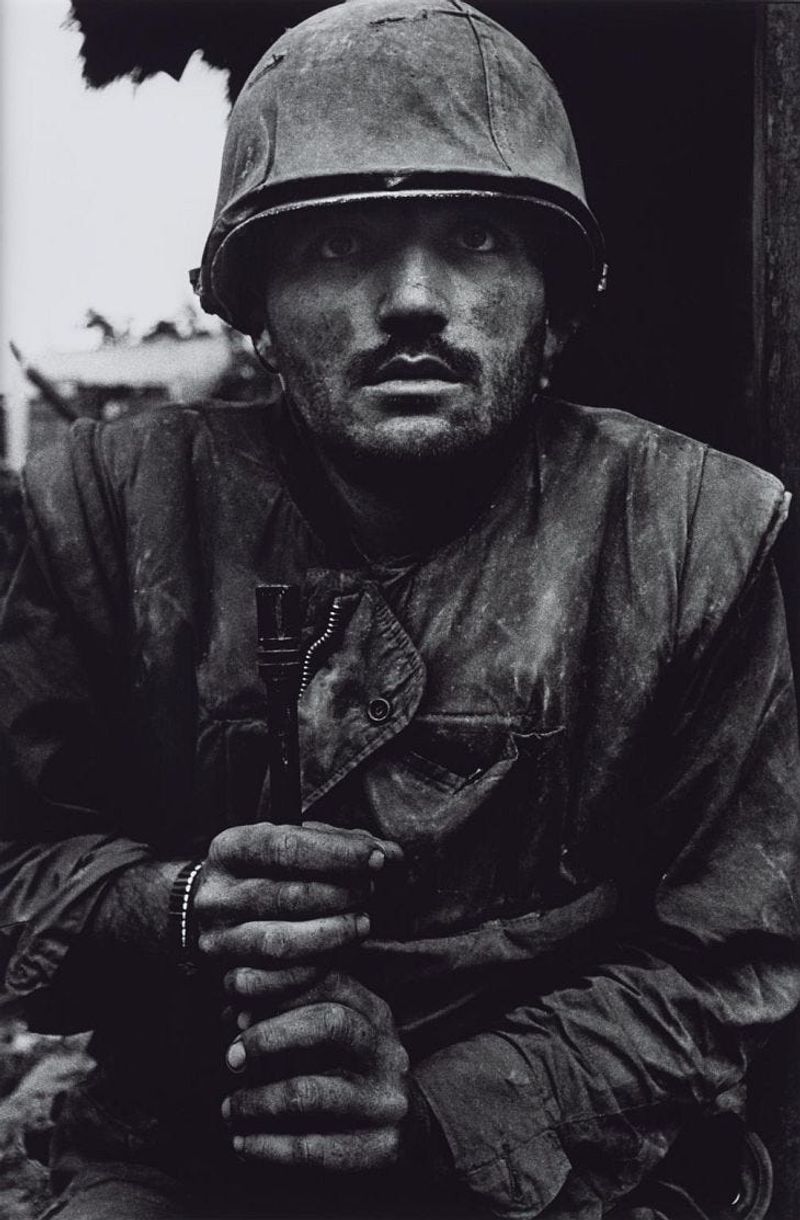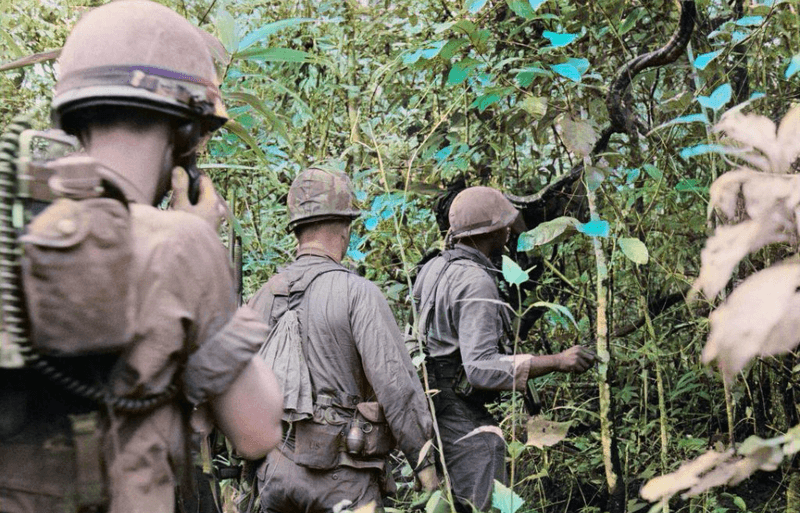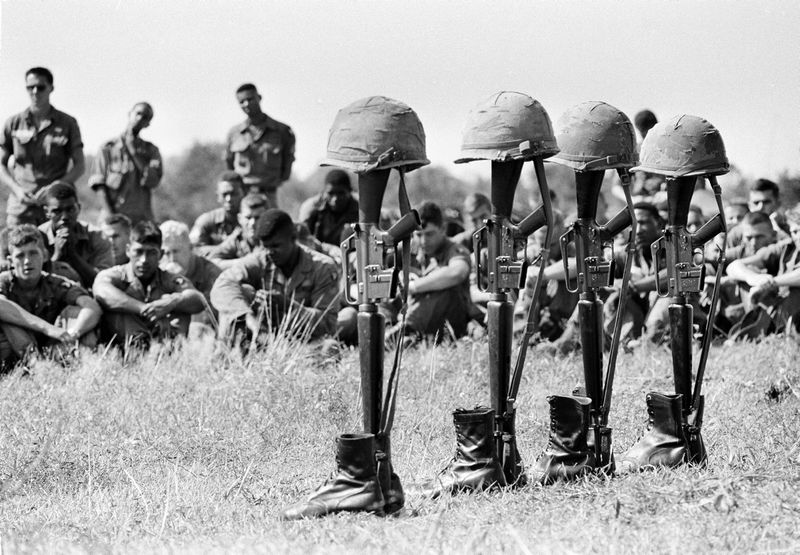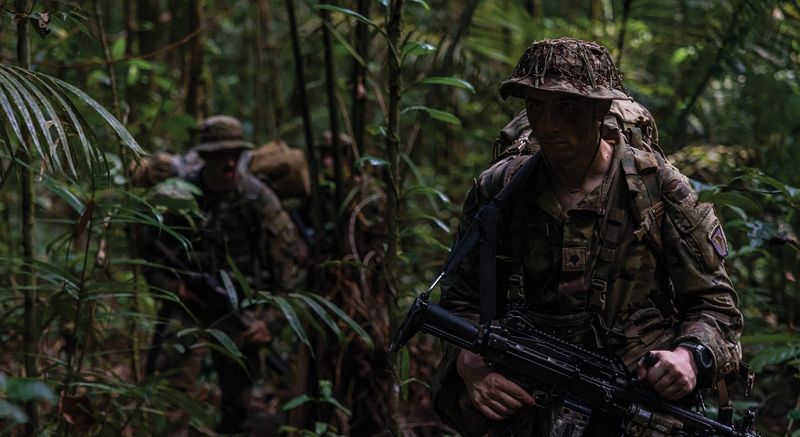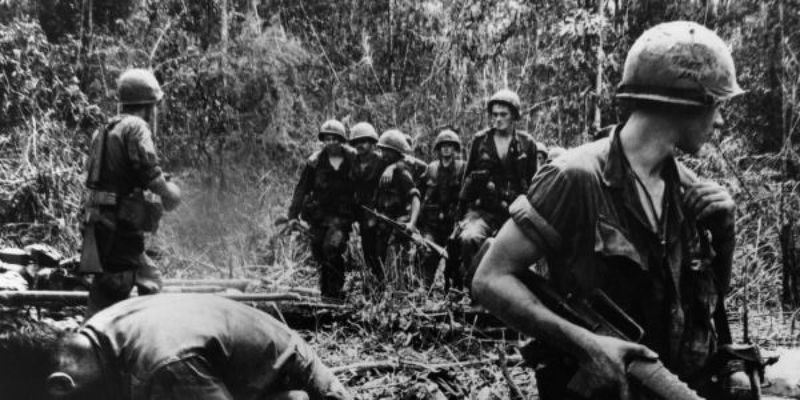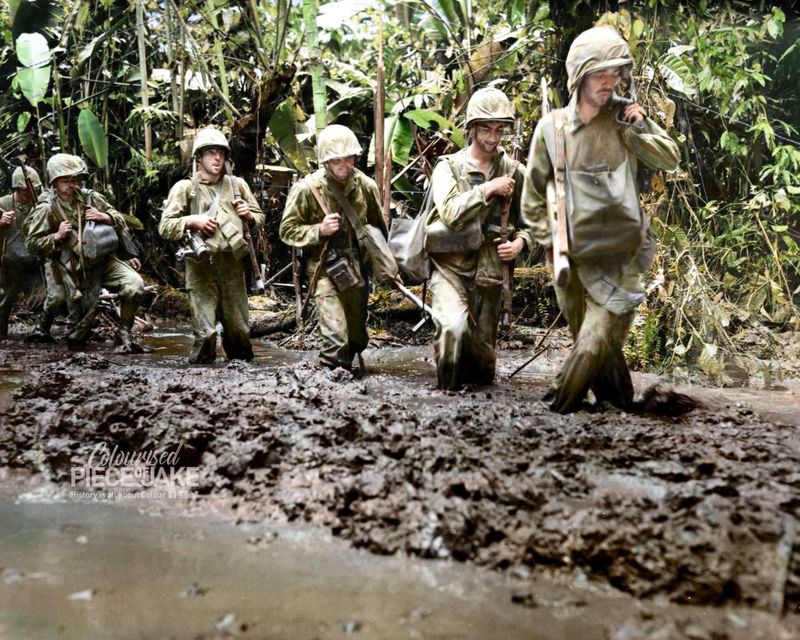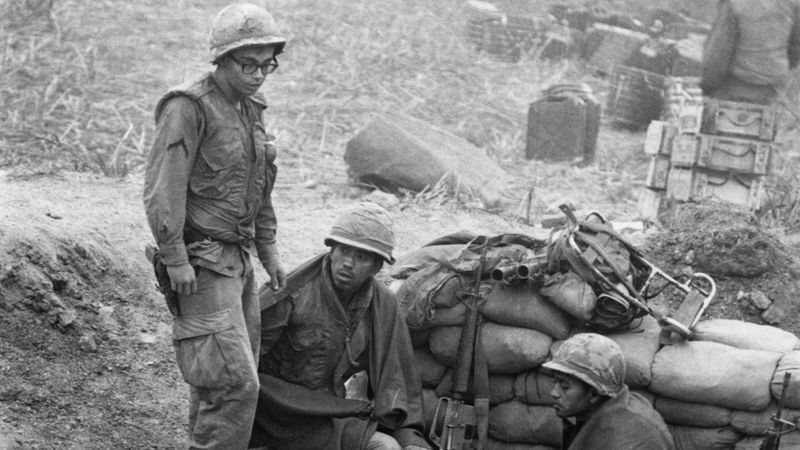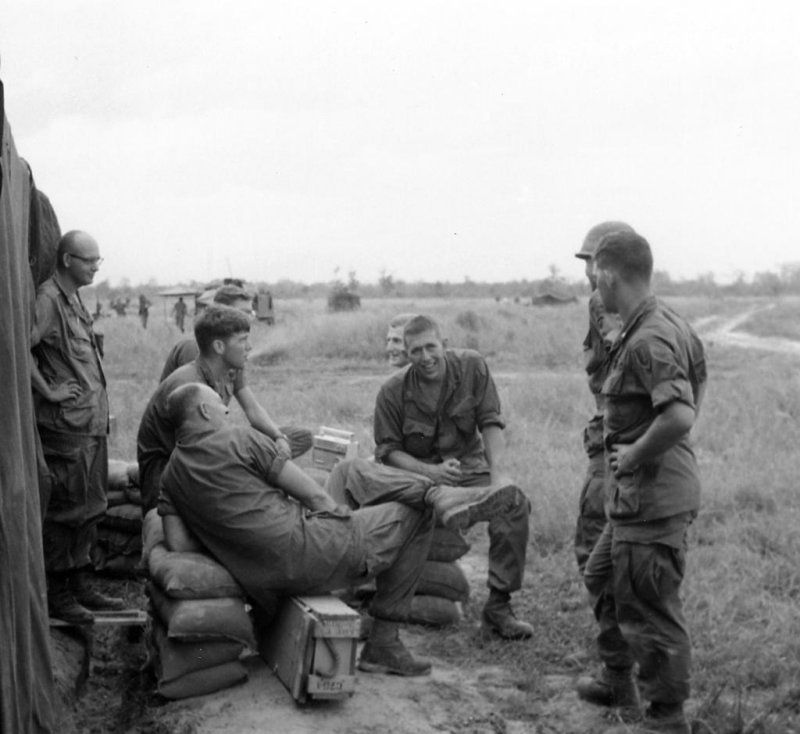The Vietnam War thrust American soldiers into one of the most challenging battlefields in military history. From 1955 to 1975, troops battled not only enemy forces but also the unforgiving jungle environment itself. The physical and psychological toll was immense, creating challenges unlike any war before it. These 19 realities paint a vivid picture of what our soldiers endured in those distant, dangerous jungles.
1. Constant Humidity That Rotted Everything
Soldiers’ bodies never fully dried in Vietnam’s oppressive jungle climate. Humidity levels regularly exceeded 90%, creating the perfect breeding ground for fungal infections that attacked feet, groins, and armpits.
Weapons rusted overnight despite constant cleaning. Clothing rotted on soldiers’ backs, and leather boots disintegrated after just weeks in the field. Food spoiled quickly, and ammunition had to be wiped down daily.
The moisture seeped into everything – radios failed, maps dissolved, and morale deteriorated as troops fought a losing battle against nature itself.
2. Leeches Dropping From Trees
Blood-sucking leeches became an everyday horror for jungle patrols. These parasites would fall from overhead vegetation or lurk in streams, attaching themselves to any exposed skin without warning. Soldiers learned to check their bodies constantly, especially after wading through water.
Removing them improperly caused infection, as their heads could break off under the skin. Veterans recall burning them with cigarettes or using salt packets from rations to force them to detach.
Some men reported pulling dozens from their bodies after a single day’s march, each leaving behind wounds that could become infected in the tropical climate.
3. Booby Traps Around Every Corner
The Viet Cong transformed the jungle into a deadly obstacle course with ingenious and terrifying traps. Punji sticks – sharpened bamboo stakes smeared with excrement – waited in hidden pits to impale unwary soldiers. The contaminated tips almost guaranteed infection.
Trip wires triggered explosives fashioned from unexploded American bombs or grenades. Some traps used bent saplings that, when triggered, would swing nail-studded boards into patrol paths at chest or face level.
Walking point (first in line) was considered one of the most dangerous jobs, with point men often having the shortest life expectancy in a unit.
4. Venomous Snakes Hiding Everywhere
Vietnam’s jungles housed over 140 snake species, dozens deadly venomous. The bamboo pit viper, nicknamed “three-step snake,” earned its name from the belief that victims could only take three steps before dying from its potent venom.
King cobras, growing up to 18 feet long, could deliver enough venom to kill an elephant. Soldiers slept with extreme caution, often keeping boots on and checking sleeping bags thoroughly.
Medics carried antivenin, but in remote areas, snake bites often proved fatal before evacuation was possible. Many units reported more casualties from wildlife encounters than from enemy contact during certain operations.
5. Relentless Mosquitoes Carrying Disease
Mosquitoes swarmed by the millions in Vietnam’s wetlands, making life miserable around the clock. Beyond the maddening buzz and constant itching, these insects carried deadly diseases like malaria, dengue fever, and Japanese encephalitis.
Malaria alone affected over 40,000 American troops during the conflict despite preventative medications. Soldiers slathered themselves with military-issued repellent containing high concentrations of DEET, which irritated skin but provided limited protection.
Mosquito nets became precious commodities, though using them while on patrol was impossible. Many veterans recall the psychological torture of lying awake, listening to the endless whine of mosquitoes waiting to strike.
6. Monsoon Rains That Never Seemed to End
For months each year, monsoon seasons transformed the battlefield into a waterlogged nightmare. Torrential downpours could dump 12 inches of rain in a single day, turning jungle paths into knee-deep mud rivers and filling foxholes with water.
Operations slowed to a crawl as helicopters couldn’t fly in the storms and visibility dropped to near zero. Soldiers developed immersion foot (trench foot) from constantly wet conditions, causing painful skin deterioration that could lead to amputation if untreated.
The psychological impact was equally devastating – the constant drumming of rain on helmet and jungle canopy drove some men to breaking points during extended patrols.
7. Invisible Enemy Using Guerrilla Tactics
American soldiers trained for conventional warfare found themselves battling phantoms. Viet Cong fighters melted into the jungle after ambushes, leaving bewildered troops firing at shadows.
The enemy used underground tunnel networks spanning hundreds of miles to appear and disappear at will. These narrow passages, barely wide enough for small-framed Vietnamese fighters, contained hospitals, sleeping quarters, and weapon caches.
Specialized “tunnel rats” – usually smaller soldiers armed only with pistols and flashlights – volunteered for the terrifying job of clearing these dark labyrinths. The psychological strain of fighting an enemy who seemed to materialize from nowhere created constant anxiety among troops.
8. Immense Heat That Drained Strength
Daytime temperatures regularly soared above 100°F with humidity making it feel even hotter. Soldiers carrying 70+ pounds of equipment suffered heat exhaustion and heatstroke during long patrols, sometimes requiring emergency evacuation.
Water discipline became critical, with men rationing limited supplies while their bodies demanded more. Some patrols required three gallons per man daily just to prevent dehydration, an impossible amount to carry.
The heat turned simple tasks into exhausting ordeals. Men lost 10-15 pounds in their first weeks in-country as their bodies struggled to adapt to the punishing climate while maintaining combat readiness.
9. Devastating Psychological Toll
The jungle environment created a perfect breeding ground for psychological breakdown. The constant threat of ambush, booby traps, and wildlife dangers kept soldiers in a perpetual state of hypervigilance that drained mental reserves.
Sleep deprivation compounded these effects. Many men developed thousand-yard stares – a blank, unfocused gaze indicating severe psychological trauma – after extended combat tours.
Unlike previous wars with clear front lines, Vietnam offered no safe zones where soldiers could truly relax. The knowledge that danger could come from any direction at any moment created anxiety disorders that many veterans still battle decades later.
10. Insects That Invaded Everything
Beyond mosquitoes, Vietnam’s jungles teemed with insects that made life miserable. Fire ants swarmed over sleeping soldiers, delivering painful bites that caused welts and allergic reactions. Giant centipedes with venomous bites hid in boots and equipment.
Enormous spiders, some with leg spans exceeding 6 inches, dropped from trees onto unsuspecting troops. Termites and beetles devoured wooden rifle stocks and equipment.
Most maddening were the tiny biting midges that could penetrate standard mosquito netting. These insects were so small that repellent proved ineffective, leaving men with clusters of itchy welts that frequently became infected in the humid conditions.
11. Contaminated Water Sources
Finding safe drinking water became a constant struggle in Vietnam’s jungles. Streams and rivers carried parasites, bacteria, and chemical contaminants that caused severe intestinal illnesses. Soldiers often had to choose between dehydration or risking dysentery.
Water purification tablets gave water a chemical taste that many couldn’t stomach, leading some men to drink untreated water out of desperation. This frequently resulted in painful bouts of diarrhea that weakened troops during critical operations.
Some veterans recall filtering water through t-shirts to remove visible parasites before adding purification tablets – a crude but necessary measure when supplies ran low during extended patrols.
12. Flesh-Eating Bacteria and Infections
Minor cuts and scrapes quickly turned life-threatening in Vietnam’s bacteria-rich environment. Jungle ulcers – painful, expanding infections that ate away flesh – developed from the smallest injuries. Without prompt medical attention, these infections could reach bone or cause sepsis.
Antibiotics became as valuable as ammunition on long patrols. Medics fought constant battles against tropical diseases that had no counterparts in American medicine.
The combination of constant moisture, heat, and abundant microorganisms meant that even properly dressed wounds often festered. Many soldiers carried extra socks not just for comfort but because foot infections could render a man unable to walk within days.
13. Dense Vegetation Limiting Visibility
The jungle canopy created a perpetual twilight even at midday, with visibility often limited to just a few yards. Triple-canopy forests blocked sunlight completely in some areas, forcing soldiers to use flashlights during daylight hours.
Moving through dense undergrowth required machetes to clear paths, slowing movement to a crawl and announcing positions to nearby enemies. The limited visibility created perfect conditions for ambushes and made it nearly impossible to spot booby traps before triggering them.
Calling in air support proved difficult when troops couldn’t see landmarks or even the sky. Many soldiers developed claustrophobia from the constant feeling of being enclosed by the suffocating vegetation.
14. Disorienting Jungle Sounds
The cacophony of wildlife created a sonic battlefield that challenged soldiers’ sanity. Nights brought deafening choruses of insects and frogs that could mask the sounds of approaching enemies. Troops struggled to distinguish between natural jungle noises and human movement.
Monkeys screeching overhead sometimes mimicked human screams, causing false alarms and frayed nerves. The constant background noise made communication difficult, with hand signals replacing verbal commands on many patrols.
Some veterans report that the sudden, unnatural silence when wildlife detected danger became the most terrifying sound of all – an almost certain indicator that enemy forces were nearby.
15. Inadequate Equipment for Jungle Warfare
Early in the conflict, American troops arrived with equipment designed for European battlefields, not tropical jungles. Standard-issue boots fell apart in wet conditions, and heavy cotton uniforms took days to dry when soaked.
M16 rifles initially jammed frequently in muddy conditions, leading to fatal consequences during firefights. Soldiers often carried captured AK-47s, which proved more reliable in jungle environments.
Radio equipment struggled in humid conditions and dense vegetation limited range. Many units improvised solutions – wrapping equipment in plastic, modifying uniform items, and developing unofficial gear protocols that contradicted official military guidelines but kept them alive.
16. Endless Mud That Swallowed Everything
Vietnam’s jungles featured a particularly sticky clay mud that clung to everything it touched. During monsoon seasons, this mud could reach thigh-deep on jungle paths, making each step an exhausting struggle that burned precious calories and energy.
Vehicles became hopelessly stuck, forcing troops to abandon mechanical transport and proceed on foot. The mud’s suction could literally pull boots off soldiers’ feet during marches.
Beyond the physical challenge, the constant mud created psychological fatigue as men gave up hope of ever feeling clean or dry. Veterans often cite the mud as one of their most vivid and unpleasant memories of the war.
17. Limited Medical Evacuation Options
When soldiers were wounded in dense jungle, reaching medical care became a life-or-death race against time. Helicopter evacuations required clearing landing zones by cutting down trees – a process that could take hours while casualties bled out.
In many areas, wounded men had to be carried for miles through hostile territory before reaching extraction points. The physical toll of carrying stretchers through jungle terrain exhausted even the strongest soldiers.
During poor weather conditions, medevac helicopters couldn’t fly at all, forcing field medics to perform emergency procedures with limited supplies. Many veterans recall the haunting sound of wounded comrades calling for medics in areas too dangerous for immediate evacuation.
18. Exhausting Physical Demands
Soldiers in Vietnam carried loads exceeding 70 pounds while navigating some of the world’s most challenging terrain. The physical toll was immense – climbing steep jungle-covered mountains in sweltering heat while remaining alert for enemy contact.
A typical infantry load included weapon, ammunition, grenades, mines, food rations for several days, entrenching tool, poncho, canteens, first aid supplies, and communications equipment. Some men lost up to 30% of their body weight during extended operations.
The energy demands were so high that the military increased standard rations to 3,600 calories daily – still insufficient for the workload. Many veterans describe the constant physical exhaustion as their most persistent memory.
19. Isolation From the Outside World
Deployed deep in remote jungles, many soldiers went weeks or months without contact from home. Mail delivery to forward bases was unreliable, with letters often arriving in bundles after long delays or not at all.
The psychological impact of this isolation proved devastating. Men missed births of children, deaths of family members, and important life events, creating a disconnection from their previous lives.
News from America came through Armed Forces Radio or heavily censored military newspapers, offering limited perspective on the growing antiwar movement. Many soldiers describe feeling they were fighting in a different universe, completely cut off from the world they were supposedly defending.

